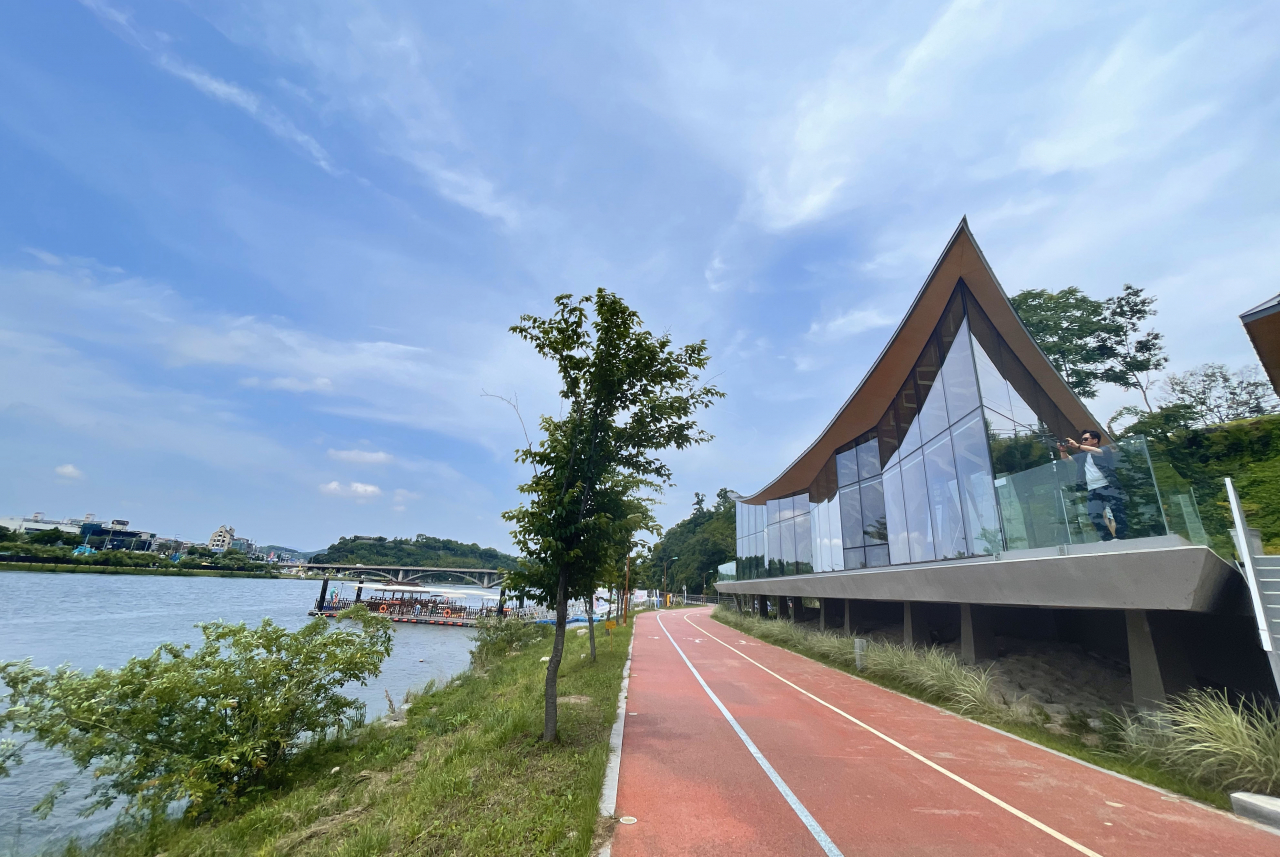 |
The Pavilion of Floating Lights, designed by architect Kim Jae-kyung, is situated in Jinju, South Gyeongsang Province, overlooking the Nam River. (Lee Sang-sub/The Korea Herald) |
The 190-kilometer Nam River weaves through Jinju, South Gyeongsang Province, carrying with it the history of the city. Behind stone walls, the city's riverside fortress, Jinjuseong, was once used as a military base against Japanese invaders in the late Goryeo Kingdom (918-1392) and during the Joseon era (1392-1910).
On a cliff above the river sits the Chokseongnu Pavilion, which was built in 1241 and is part of Jinjuseong Forest. The wooden architecture, featuring six timber columns at the front, overlooks the river and was a popular place of leisure among the literati. Chokseongnu Pavilion was built as a "nugak," or a traditional attic style of architecture with no walls to allow people to appreciate the surrounding scenery to the fullest.
How would Chokseognu Pavilion have evolved after hundreds of years if the timber architecture technique succeeded today? This curiosity is rooted in the newly built Pavilion of Floating Lights, located on the riverside across from Chokseongnu Pavilion, featuring its architect’s own interpretation of the architectural legacy.
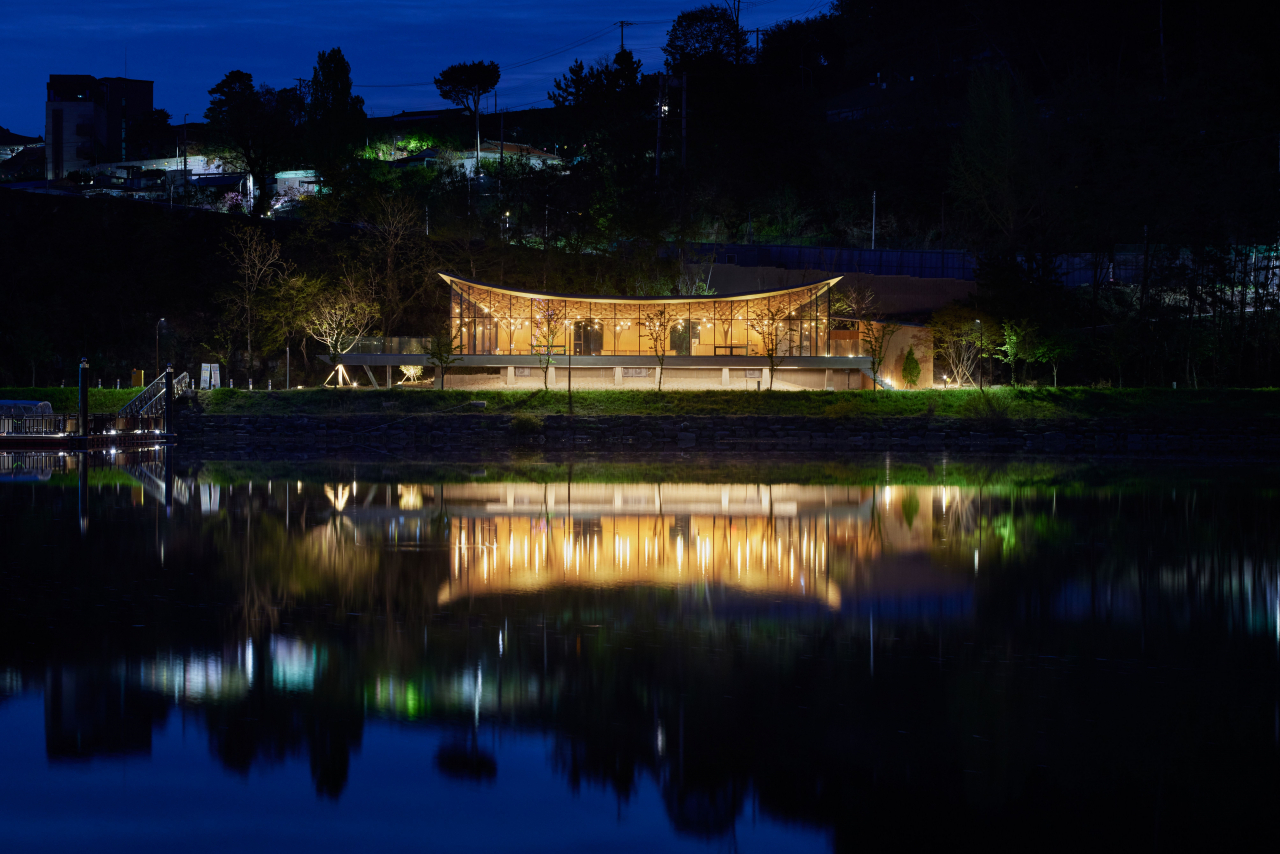 |
The Pavilion of Floating Lights glows at night in Jinju, South Gyeongsang Province. (Kim Jae-kyung) |
Pavilion of Floating Lights was designed by architect Kim Jae-kyung of JK-AR architecture practice. Kim is also a professor of the school of architecture at Hanyang University, and has pursued his own architecture style and techniques inspired by Korea’s traditional wooden structures.
Becoming the city’s latest trademark wooden architecture, Pavilion of Floating Lights opened to the public last year, serving as a rest area right next to a wharf for the city’s newly launched cruise ship Kim Si-min-ho, named for Korean Gen. Kim Si-min (1554-1592) who led the defense in the first Siege of Jinju in 1592 to victory against the Japanese military.
The Pavilion of Floating Lights and the Kim Si-min-ho cruise were initiated by the city government as part of a tourism project to make the most of the river and invite sojourners to experience the city’s cultural heritage. The city chose Kim, considered as a pioneer of contemporary timber architecture, to design the pavilion.
“We were looking for an architect who would suit the city’s concept that pursues wooden architectures for sustainability. We asked Kim to design a landmark architectural structure in the city, and he was chosen by the public architects’ system,” said Kang Tae-wook of the Public Facilities Division of Jinju. The budget allocated for the project was around 1.1 billion won ($821,000), according to Kang.
The design won an award at the 39th Wood Design & Building Awards and the 2022 Korea Wood Design Awards.
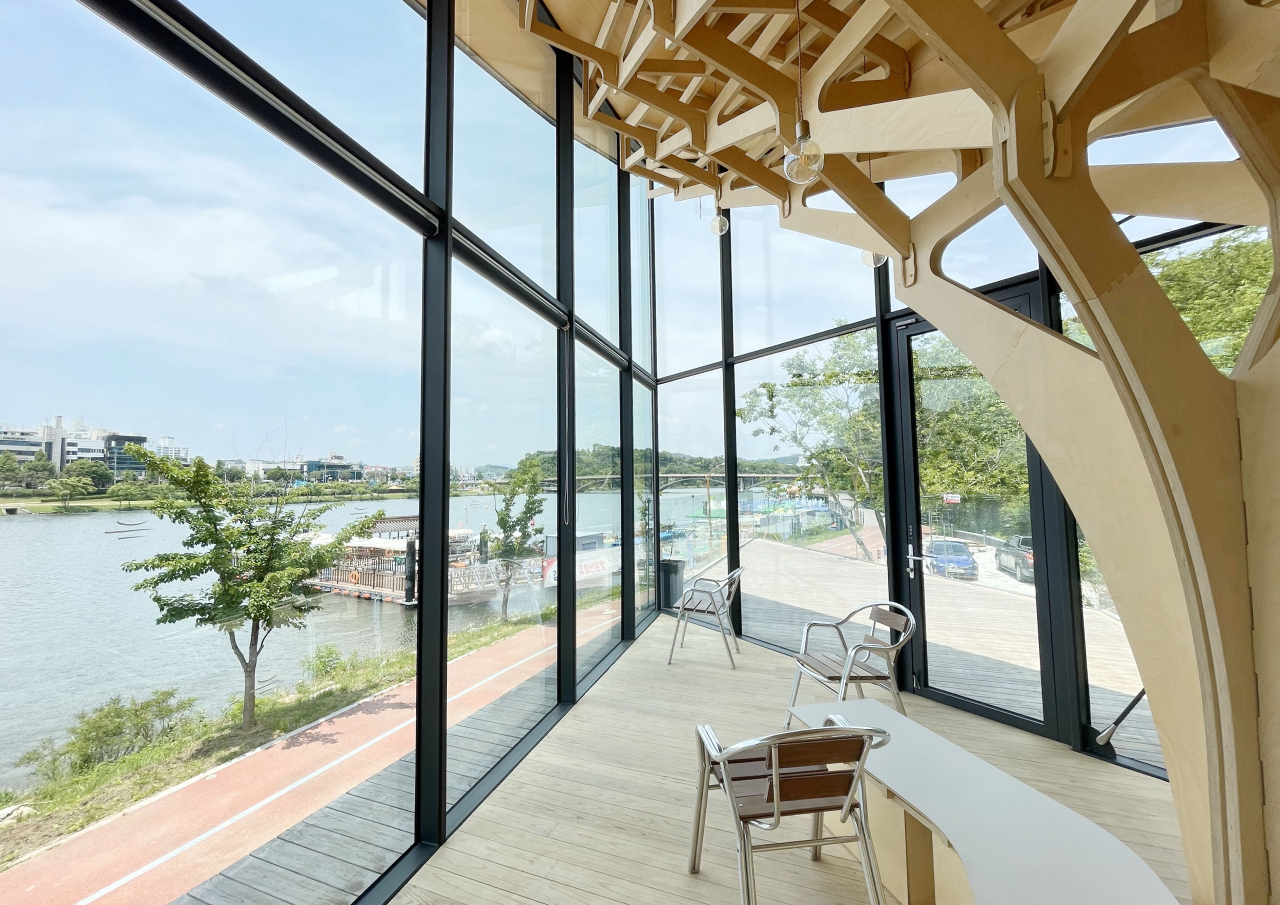 |
A wharf for the Kim Si-min-ho cruise is seen from the Pavilion of Floating Lights. (Lee Sang-sub/The Korea Herald) |
While waiting to board the Kim Si-min-ho cruise ship, people are able to spend time inside the Pavilion of Floating Lights, enjoying views of the river. The pavilion encompasses an area of 120 square meters, including a small cafe and a ticket office for the cruise, which can carry 20 people over the Nam River for 30 minutes.
Jo Cho-hoon, a 33-year-old resident born and raised in the city, visited the Pavilion of Floating Lights on June 8 with her husband and two children. She was looking over the Nam River at the pavilion before embarking on a cruise scheduled for 5 p.m.
Jo said she learned about the Pavilion of Floating Lights on social media while looking for a place to go with her little kids.
“The Nam River is really special for Jinju people. I grew up walking along the riverside, and I have so many memories with this river. It is really good for our family to have something to enjoy together. I want to visit this pavilion late at night because it looks beautiful on social media,” Jo said, her eyes on the river.
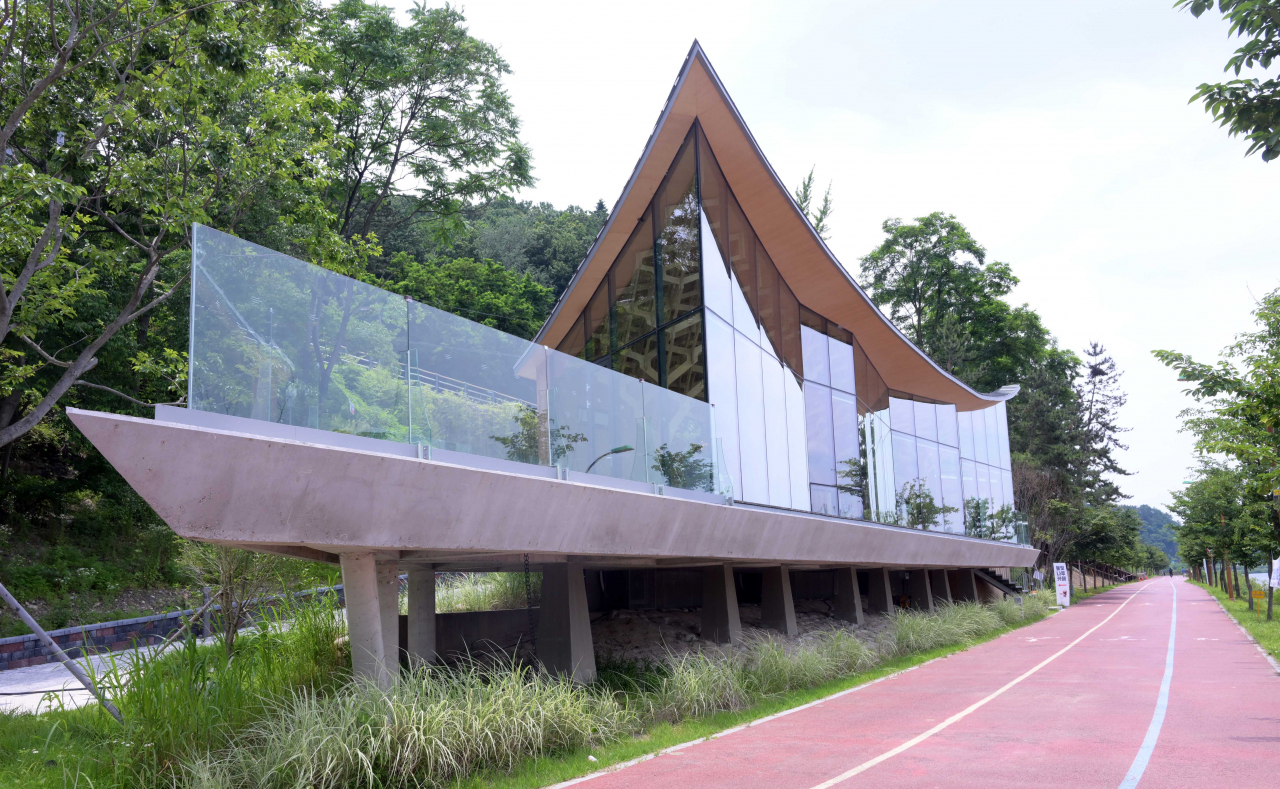 |
The Pavilion of Floating Lights in Jinju, South Gyeongsang Province (Lee Sang-sub/The Korea Herald) |
Departing from the Pavilion of Floating Lights, the cruise slowly travels by Chokseongnu Pavilion and the Gyeongnam Culture and Art Center, another landmark designed by Korean architect Kim Chung-up (1922-1988). The building, erected in 1988, has iconic columns, apparently inspired by the Chokseognu Pavilion.
Heo Young-ja, an 86-year-old native of the city, got on board with her two friends. “It feels cool on the river because there is a breeze. We would stay under the bridge to get away from heat in summer, but now we have another way to avoid the heat,” she said.
Another iconic piece of architecture is located in Jinjuseong, Jinju National Museum, designed by renowned architect Kim Swoo-geun (1931-1986).
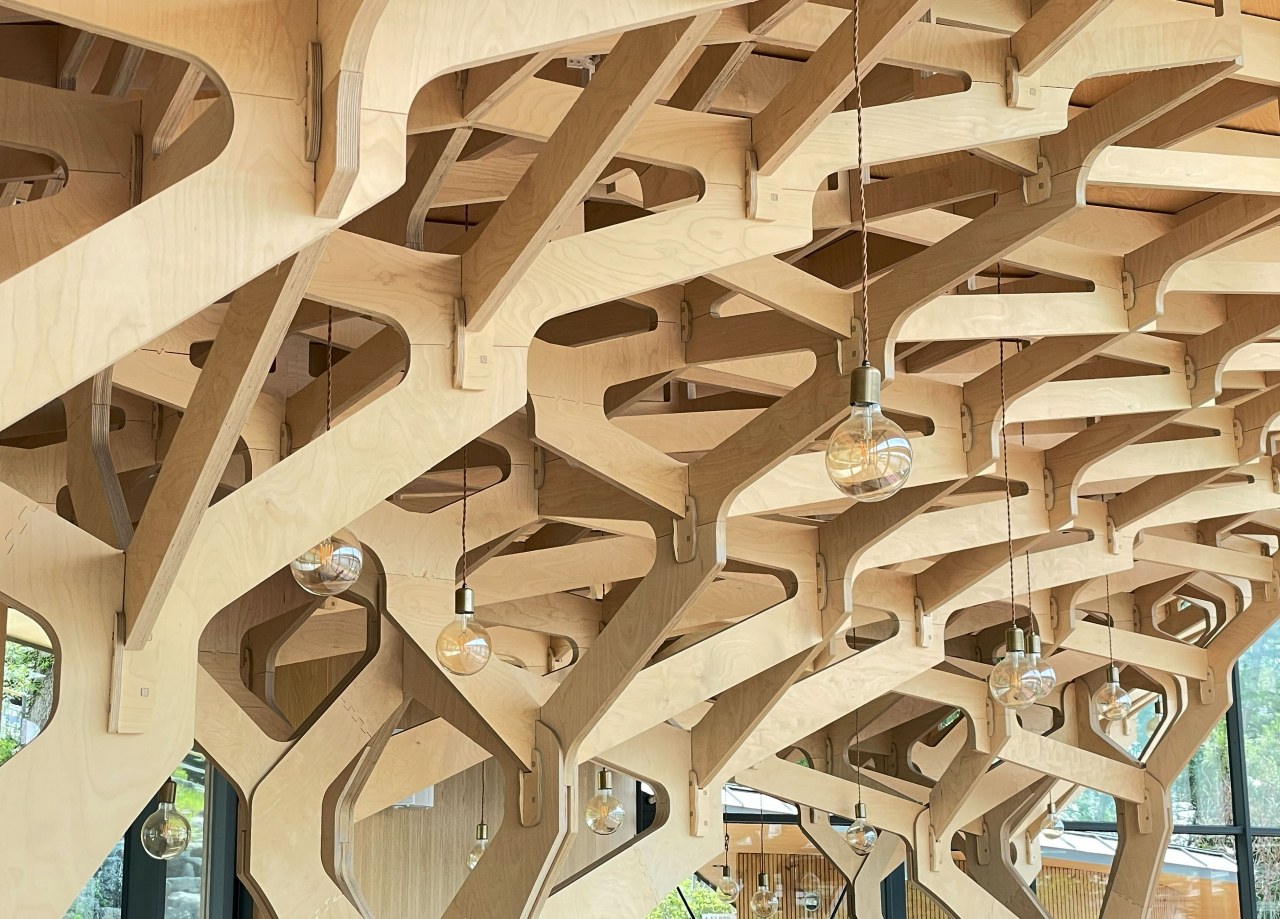 |
The Pavilion of Floating Lights features contemporary "gongpo," newly interpreted by architect Kim Jae-kyung. (Lee Sang-sub/The Korea Herald) |
‘Gongpo’ in East Asian wooden architectures
Kim, the architect for the Pavilion of Floating Lights, has exhibited his own sense of timber architecture rooted in a traditional bracket structure, known as "gongpo" in Korean. Gongpo was used as a structure under the roof to support its weight and functioned as decorative elements, as part of the wooden architecture mainly found in palaces and temples.
Gongpo is only found in East Asian architecture, featuring different aesthetic elements across South Korea, Japan and China, according to Kim. As contemporary architecture in South Korea has become dominated by concrete, wooden architecture is rare, and gongpo has been gradually forgotten.
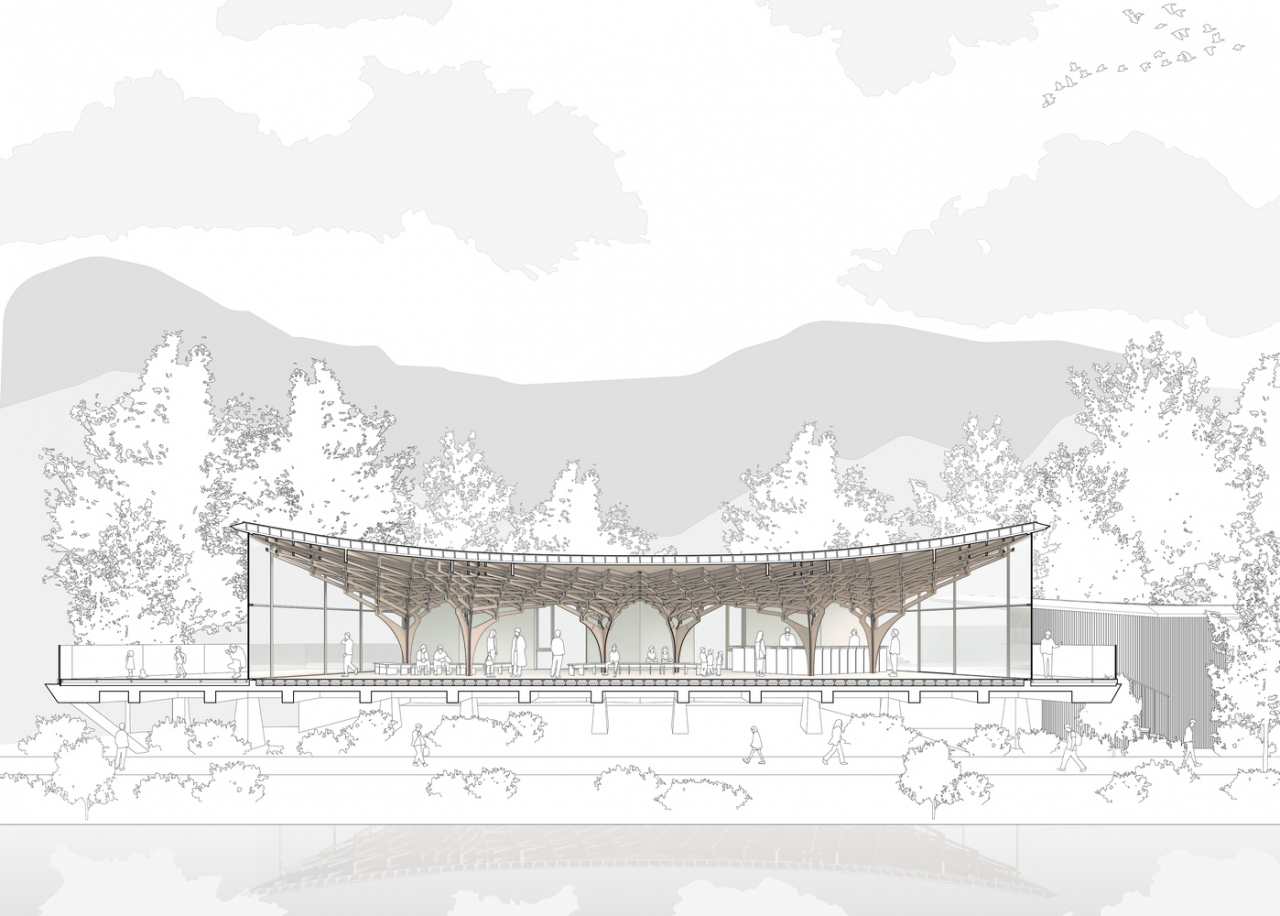 |
A concept image of the Pavilion of Floating Lights provided by architect Kim Jae-kyung (Kim Jae-kyung) |
“Many buildings are now generalized in terms of style in the contemporary era, which is why I think many architectures are losing their own locality. I came to think how my own architecture could reflect South Korea’s aesthetics, when diversity is valued in our time,” Kim said.
The Pavilion of Floating Lights has six columns of gongpo based on Kim’s own design, which are installed inside the pavilion, with inspiration from the Chokseognu Pavilion’s six wooden columns.
Kim spent at least three months preparing quality, transparent glass to give a feeling of "chagyeong," meaning "borrowed scenery," which invites the surrounding scenery to become part of the architecture.
Kim’s timber gongpo structure is created by hand and with technology. The wood is cut with a computer-controlled machine and the created elements are linked and installed by hand. Kim’s timber architecture holds both elements of humanism and cutting-edge technology.
“I think an architect has to pursue their own architectural identity stubbornly, and fiercely agonize over their own style. Limited information exists on gongpo. That is why I am researching about the structure and plan to publish a book in English to share my findings," he said.
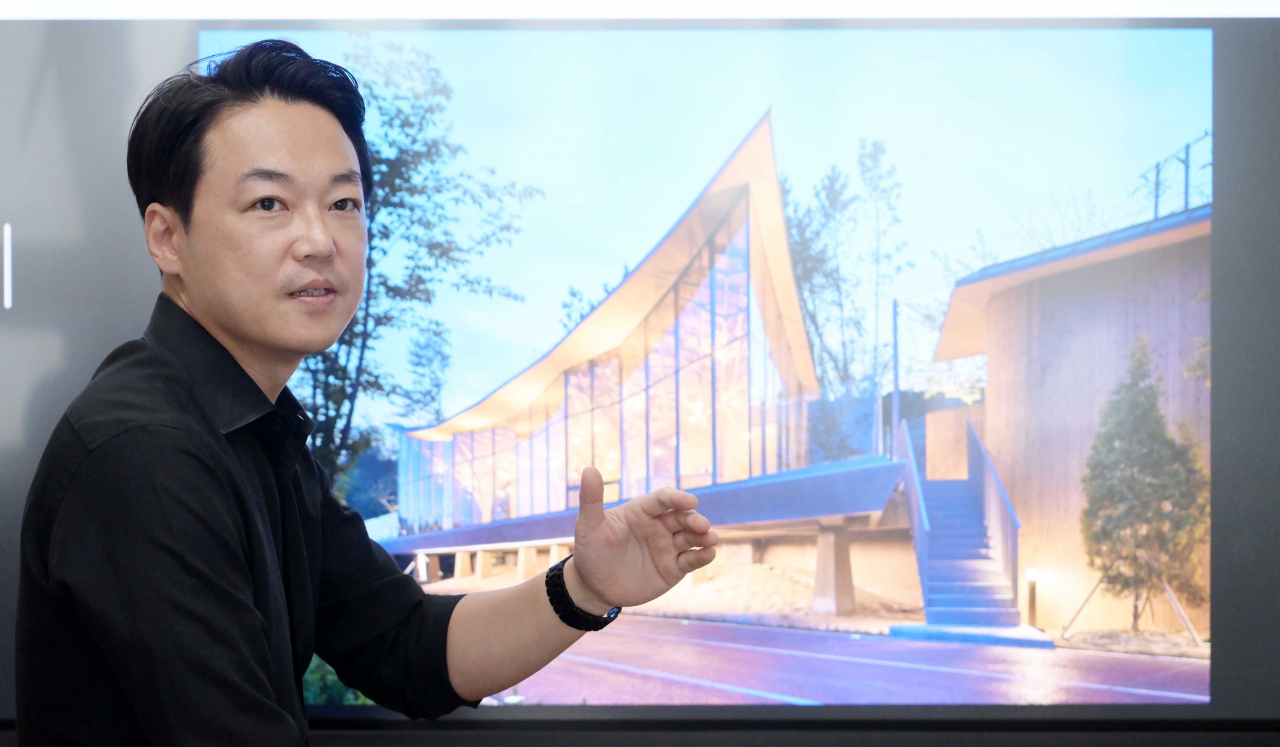 |
Architect Kim Jae-kyung speaks on his architectural concept for the Pavilion of Floating Lights at Hanyang University on June 12. (Lee Sang-sub/The Korea Herald) |
This is the third article in a seven-part series exploring the role and impact of public architecture in civic life. -- Ed.





![[Weekender] Korea's traditional sauce culture gains global recognition](http://res.heraldm.com/phpwas/restmb_idxmake.php?idx=644&simg=/content/image/2024/11/21/20241121050153_0.jpg)

